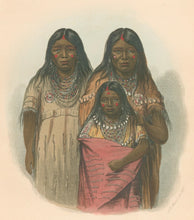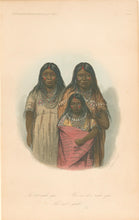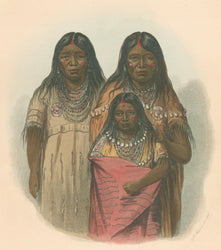George Catlin. "Ne-bet-neuh-qua."/"Wos-ab-e-neuh-qua."/"Nib-nab-i-quah." From James C. Prichard's The Natural History of Man.
London: Hippolyte Balliere, [1844]. Octavo (9 1/2" x 5 1/2" full sheet). Etching. Original hand color. Very good condition.
About the same time that Catlin was having his portfolio produced, James Prichard borrowed a number of the images of Catlin's paintings for his scientific publication, the Natural History of Man. Prichard began the research for his study in 1813, intending to establish that the human race originally was all dark-skinned. He modified this view over the years, but still concluded that the human race was all one species, one family. Eventually Prichard gathered all available research about various races of humankind and his work became an important foundation for modern ethnological science. Included in Prichard's History were fine portraits of different human races taken from original drawings of various artists, most notably these by George Catlin. Based on first hand studies made in the field by Catlin, these prints provide us with some of the most authentic images of Plains Indians from the mid-nineteenth century.





